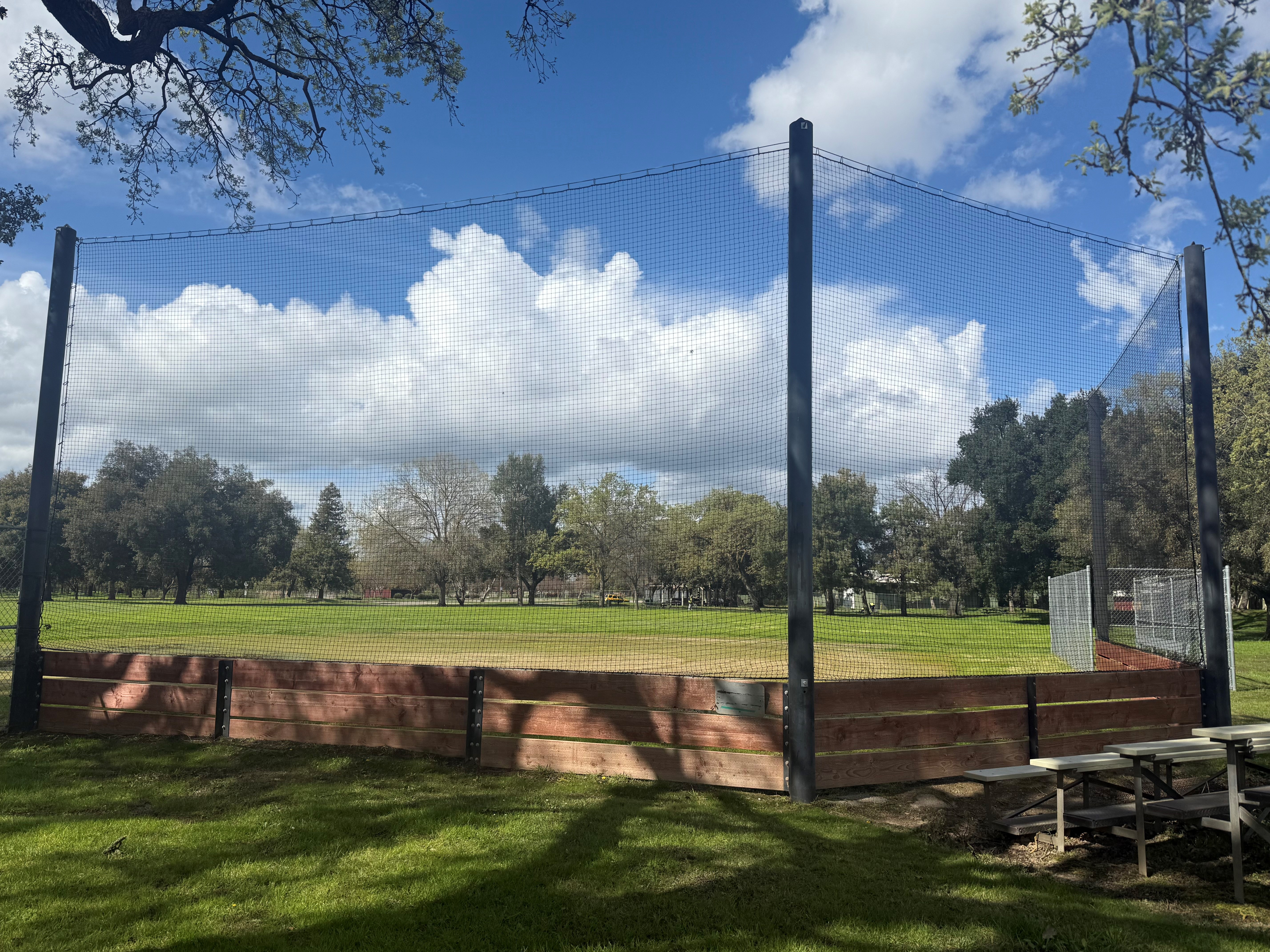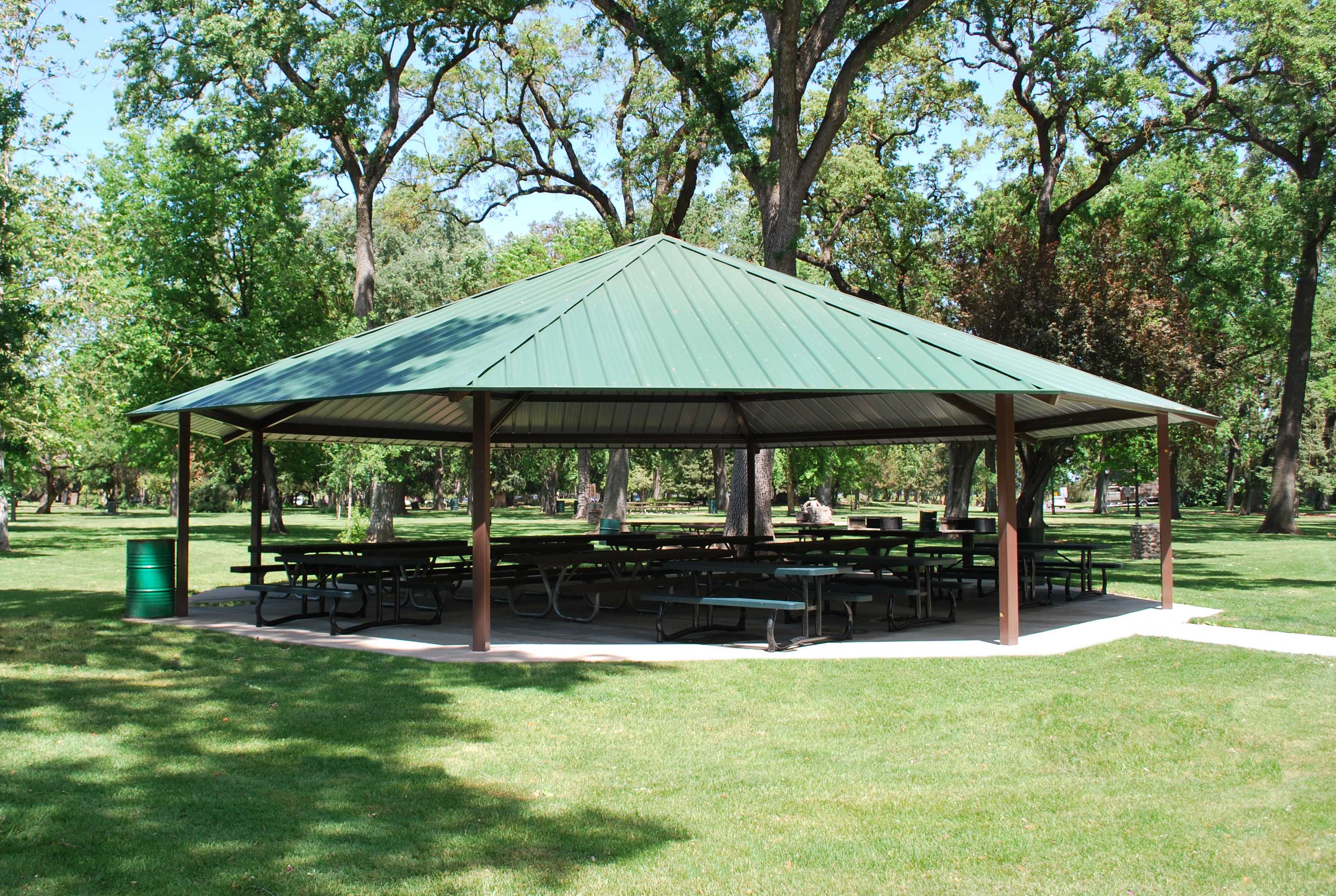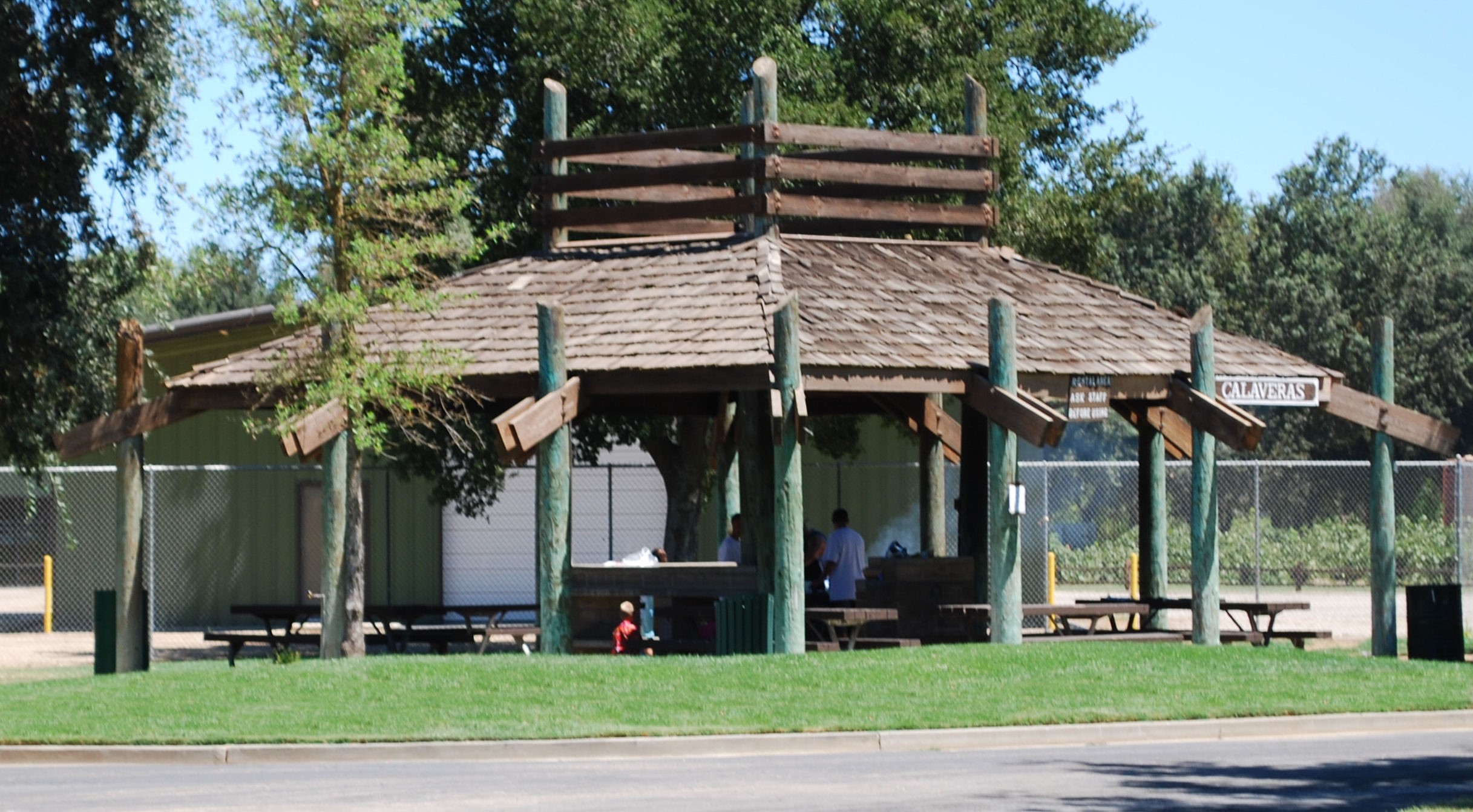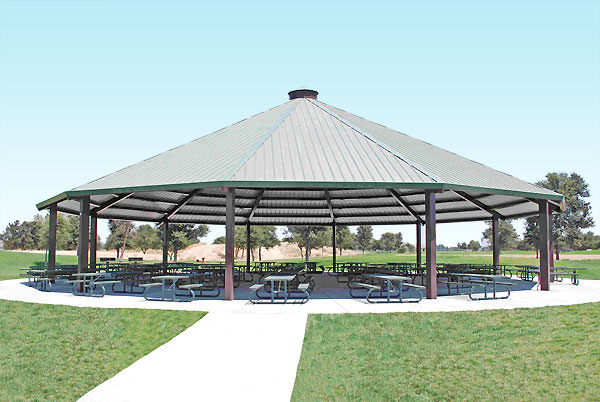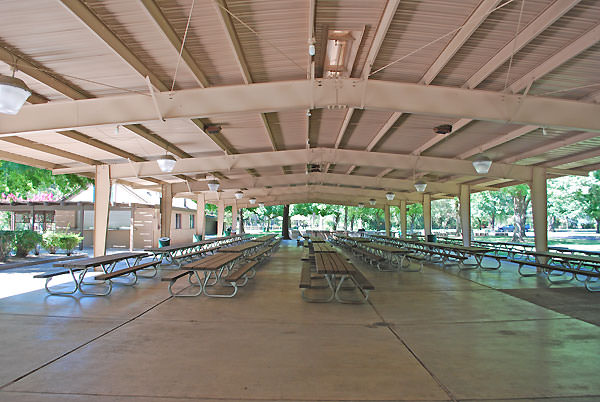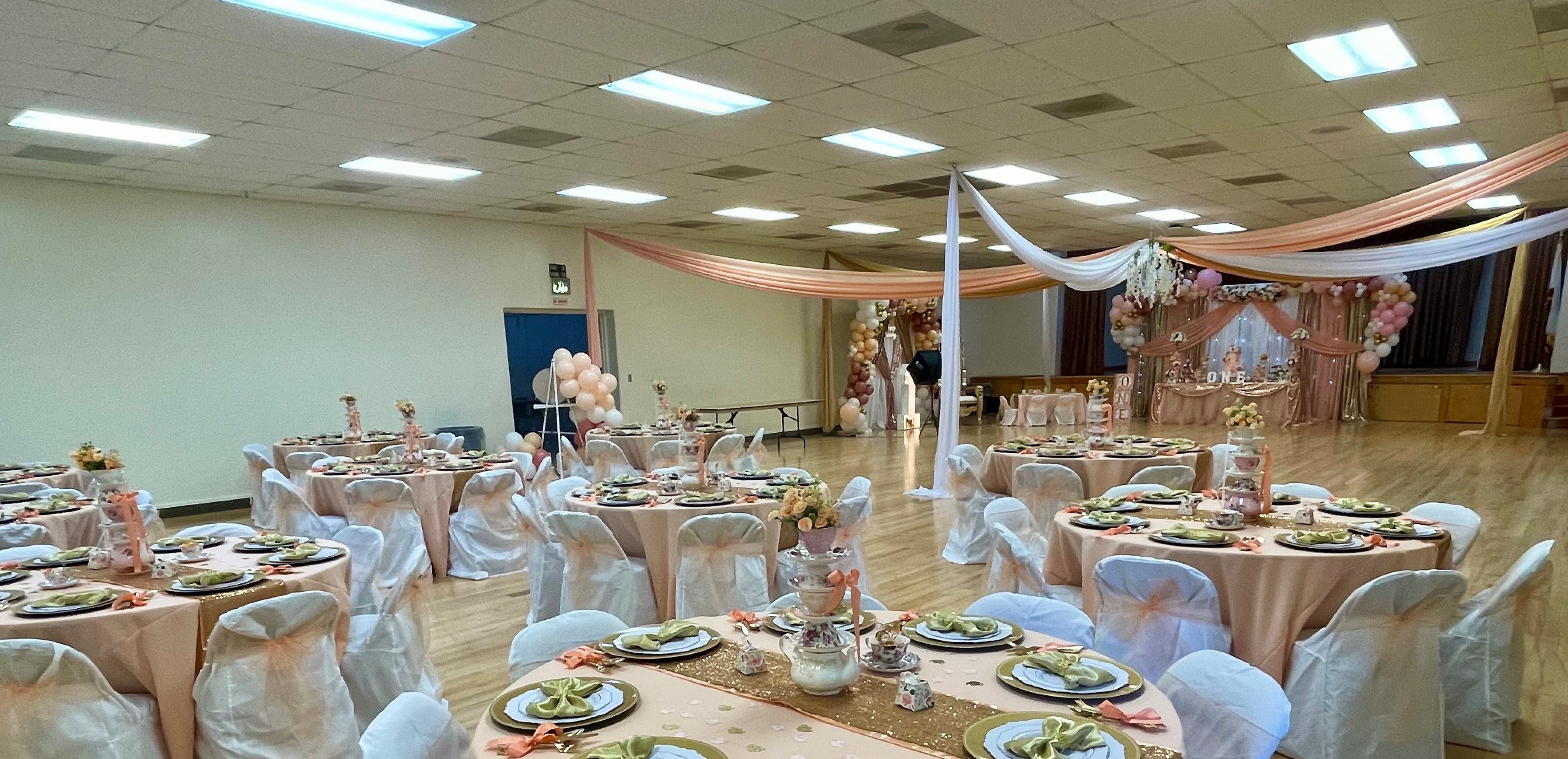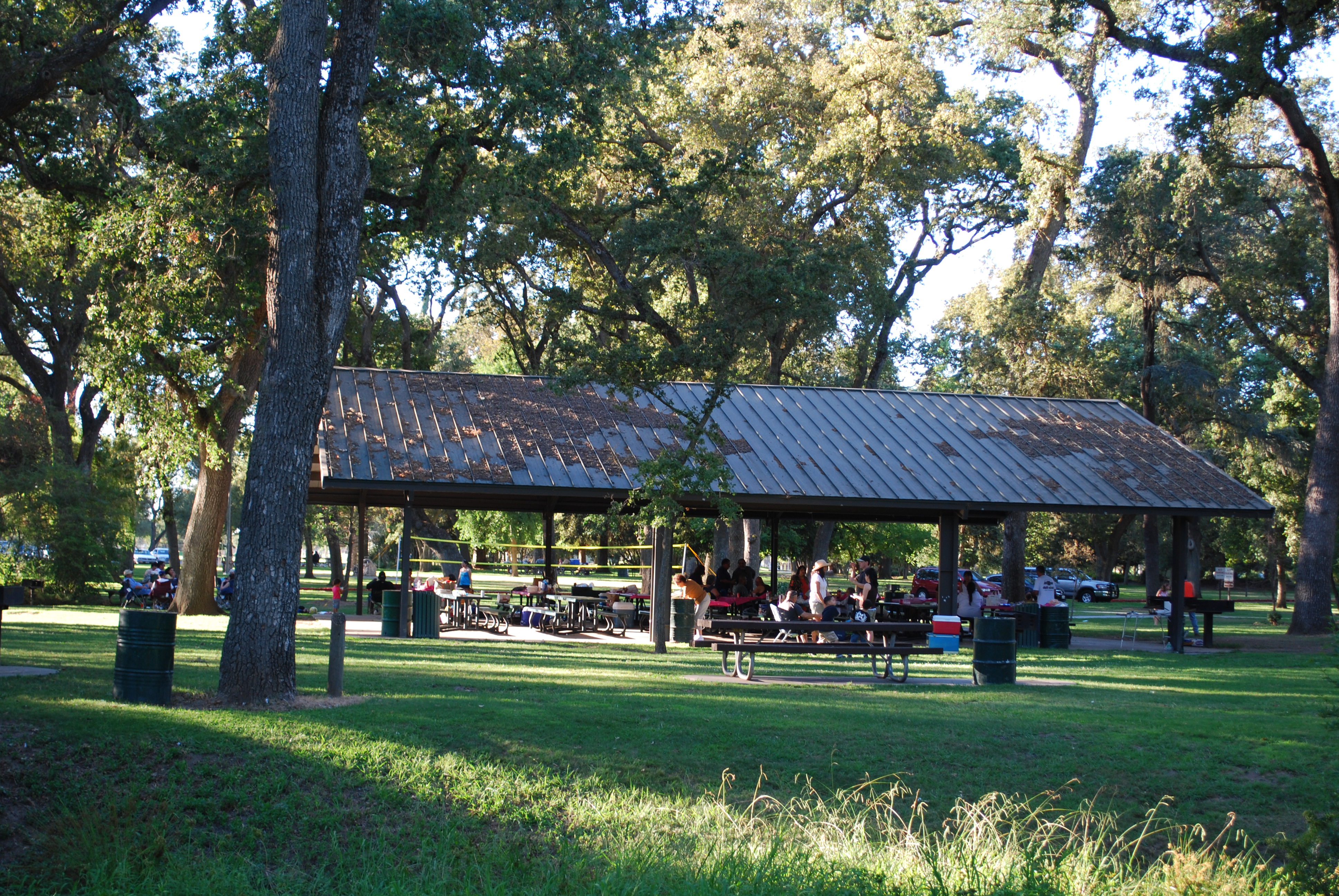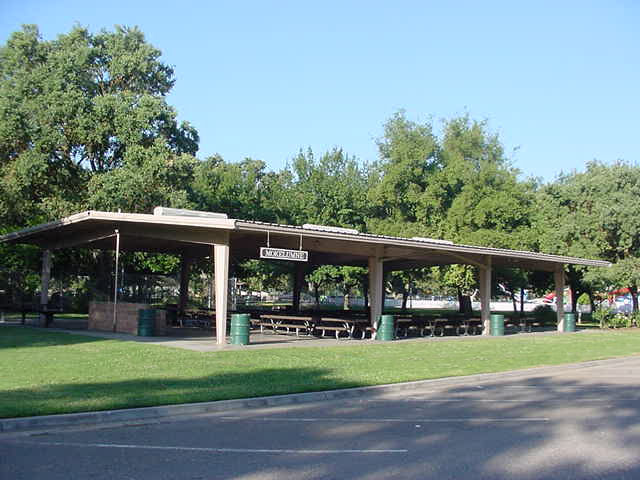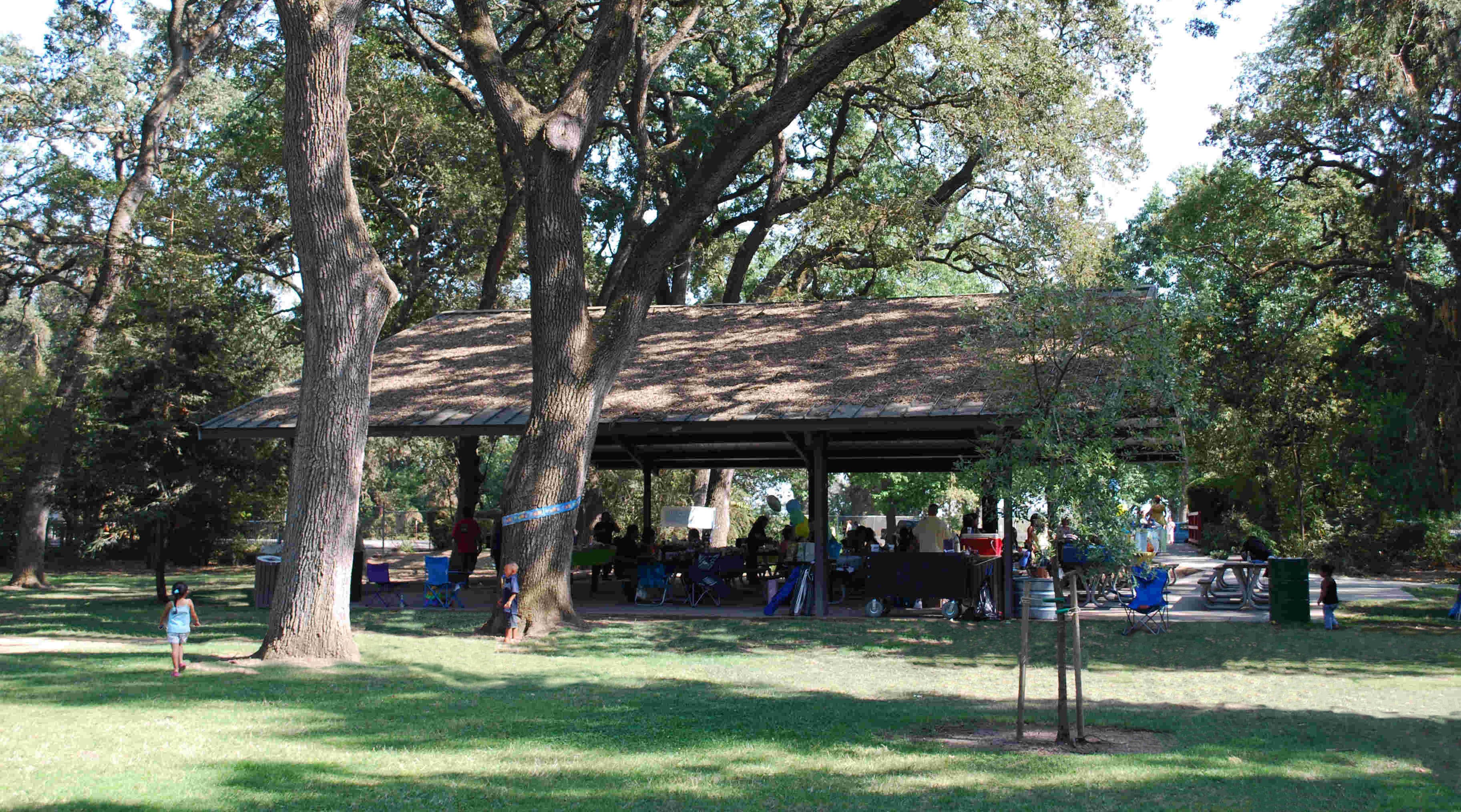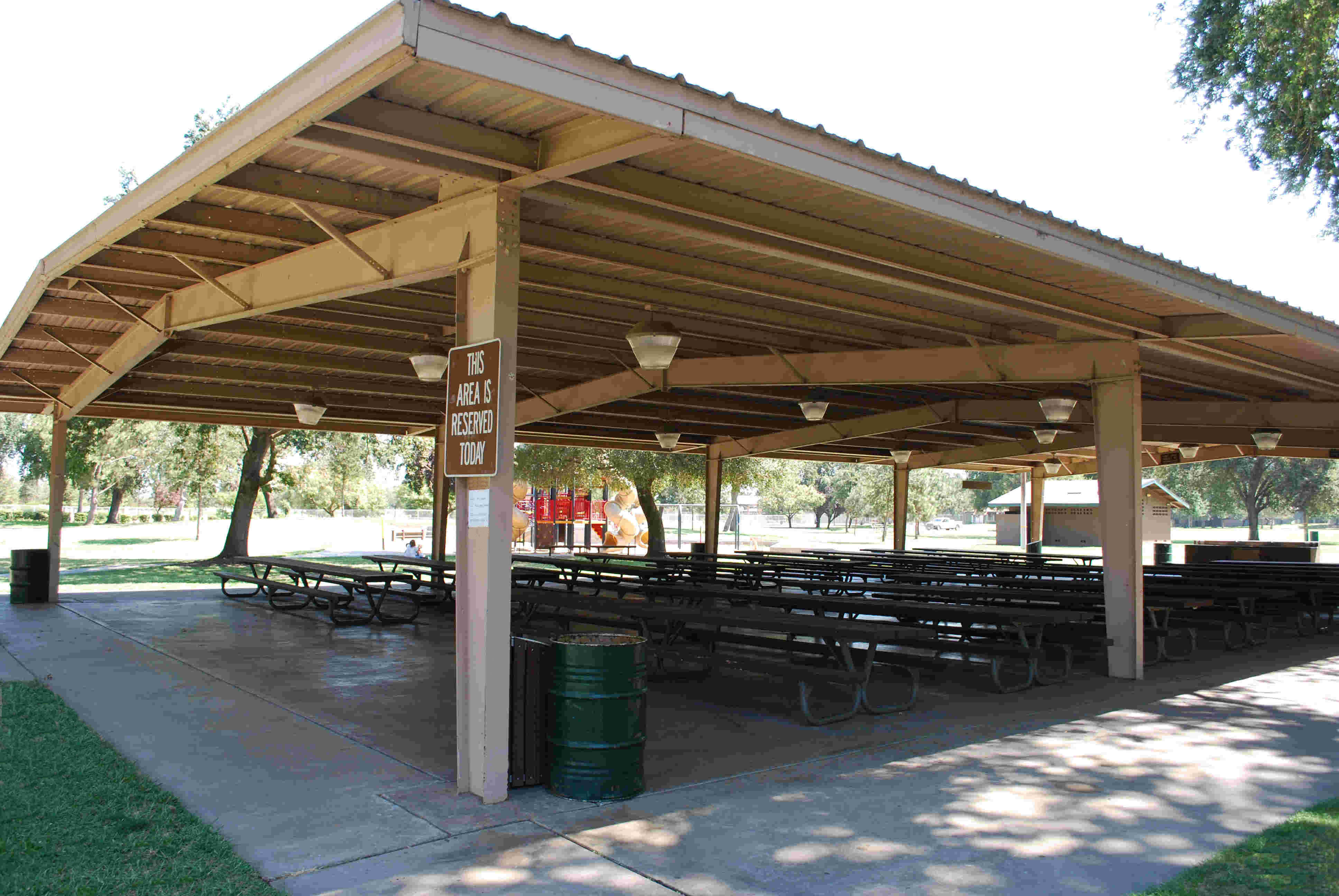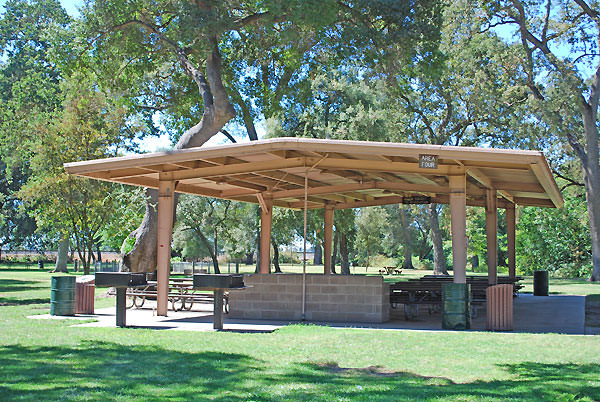Facility Information
This beautiful Japanese Garden had its beginnings in 1959 through the guidance of “Duke” Yoshimura. Seeking to bridge the Japanese community with the people of San Joaquin County, Duke asked William Micke for permission to build a garden honoring his cultural heritage. True to his nature, Micke thought it was a wonderful idea and set aside three acres for the garden. Today, it offers a tranquil setting within the midst of bustling regional park. Among its more prominent features is an indoor Tea Pavilion with seating for 50, peaceful Koi pond featuring several colored varieties of the fish and striking red arch bridge accented with eight bronze lotus flower bud finials. The garden remains popular for weddings or ceremonies (no receptions allowed, food and drink prohibited) as well as for those interested in a stroll among its harmonious surroundings. Pets are prohibited.
+ Friday thru Sunday and holiday rental is a 4-hour block between 2 p.m. to 7 p.m. March thru October and 1 p.m. to 5 p.m. only November thru February.
++ Monday thru Wednesday rental is a 2-hour block between 3 p.m. to 7 p.m. March thru October and 3 p.m. to 5 p.m. only November thru February.
+++ Thursday rehearsals can be scheduled for a one-hour block between 3 p.m. to 7 p.m. March thru October and 3 p.m. to 5 p.m. November thru February.
Amenities
- 175 Capacity
- Restrooms nearby
- Parking nearby (Accessible Spaces Available)
Entire amount due at time of booking, parking fees are separate
Discount Parking available with reservation
Pre-paid vehicle passes purchased in advance receive 50% off discount per pass
Passes are date-stamped, non-refundable and must be distributed prior to event
Cancellation Policy
Date/site change or cancellations more than 90 days from event - $25
Date/site change or cancellations 90 days or less from event - no refund minus deposit
Processing fee non-refundable
Reservations - (209) 953-8800 weekdays 8 a.m. to 4:30 p.m.
This beautiful Japanese Garden had its beginnings in 1959 through the guidance of “Duke” Yoshimura. Born in Sacramento and educated in Japan, Yoshimura had returned to the United States, entering high school to learn English. “Duke” would come to serve in the armed forces during World War II, where he also taught judo.
In 1959, “Duke” came to work in Micke Grove Park and asked Mr. William Micke for permission to build a Japanese Garden for the Japanese community to show solidarity with the people of San Joaquin County. Mr. Micke thought it was a wonderful idea and set aside three acres for the garden.
A committee of residents from Stockton, Lodi and French Camp was formed to solicit $5,000 in pledges and approximately 100 hours of volunteer labor from each member of the Japanese Gardeners Club.
“Duke” contacted Nagao Sakurai, who had served 20 years as landscape architect at the Imperial Palace in Japan before coming to design gardens in the United States. Mr. Sakurai agreed to design the garden, and it was dedicated in April, 1965.
The garden is surrounded by 60 Kwanzan flowering cherry trees with five Akibono flowering cherry trees in the central area of the garden.
Three religions have an influence in the garden. Shintoism is expressed in the use of stones, Buddhism is visible in the use of lanterns and Taoism is manifested in the islands.
There are 11 lanterns in the garden, all being stone except for one which is concrete. The five-story pagoda lantern situated on the north hill was donated by Lodi’s sister city; Kofu, Japan. Each story is representative of fire, water, earth, air and atmosphere. The long rod on the top has nine rings and has a kinship to Buddha. The flame-shaped tip denotes protection against fire.
Koi fish in the pond have been known to live for 200 years. The fish, with ring markings on its scales designating age, can grow to three feet in length. Colors range from red, blue, white, brown, black and yellow.
The garden’s angle bridge represents Chinese belief that evil spirits travel in a low straight line, therefore unable to follow across this bridge. The red arch bridge, meanwhile, is of typical Japanese design and includes eight bronze lotus flower bud finials.
The large building in the garden is a pavilion designed by Hoji Wada of Stockton, who also designed the garden’s entrance gate. It provides a beautiful backdrop for outdoor weddings, which are popular in the garden.
Micke Grove Regional Park
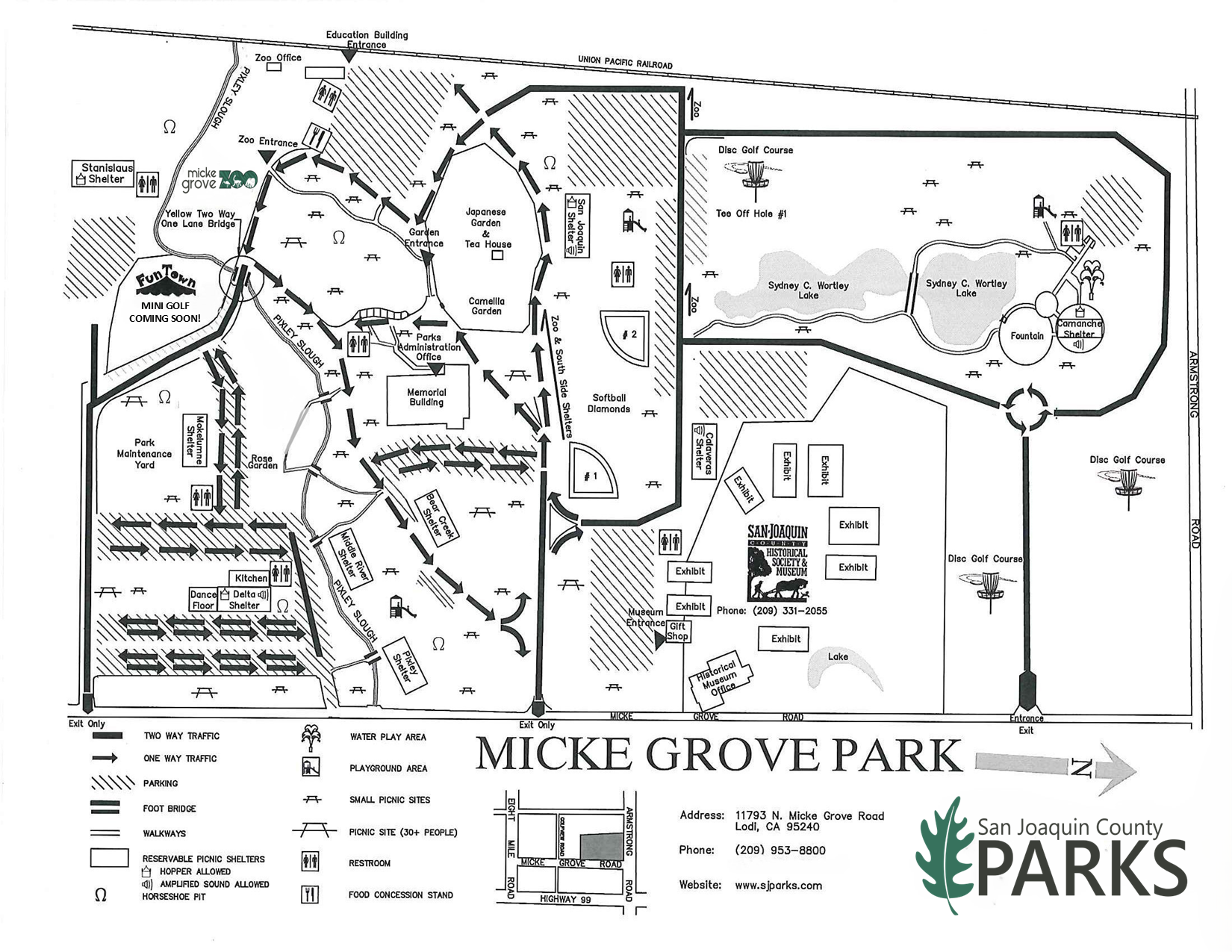
11793 N. Micke Grove Rd.
Lodi, CA, 95240
Google Maps
Park hours: 8 a.m. to sunset
For reservations:
Call (209) 953-8800 OR in person at the San Joaquin County Parks Office (located inside Micke Grove Regional Park). Hours of operation are weekdays, 8 a.m. to 4:30 p.m.
